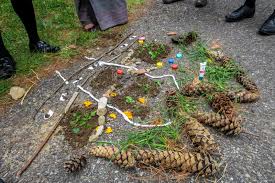CONDUCTING BEST PARTICIPATORY RURAL APPRAISAL
INTRODUCTION
What is participatory
rural appraisal?
Participatory
Rural Appraisal (PRA) is considered one of the popular and
effective approaches to gather information in rural areas. This approach was
developed in early 1990s with considerable shift in paradigm from top-down to
bottom-up approach, and from blueprint to the learning process. In fact, it is
a shift from extractive survey questionnaires to experience sharing by local
people. PRA is based on village experiences where communities effectively manage
their natural resources.
PRA
is a methodology of learning rural life and their environment from the rural
people. It requires researchers / field workers to act as facilitators to help local
people conduct their own analysis, plan and take action accordingly. It is
based on the principle that local people are creative and capable and can do
their own investigations, analysis, and planning. The basic concept of PRA is
to learn from rural people. Chambers (1992) has defined PRA as an approach and
methods for learning about rural life and conditions from, with and by rural people.
He further stated that PRA extends into analysis, planning and action. PRA
closely involve villagers and local officials in the process.
PRA
Tools
PRA offers a
"basket of techniques" from which those most appropriate for the
project context can be selected. The central part of any PRA is semi-structured
interviewing. While sensitive topics are often better addressed in interviews
with individuals, other topics of more general
concern are amenable to focus group discussions and community meetings. During
these interviews and discussions, several diagrammatic techniques are
frequently used to stimulate debate and record the results. Many of these
visuals are not drawn on paper but on the ground with sticks, stones, seeds,
and other local materials, and then transferred to paper for a permanent
record.
Semi-structured
interview (SSI)
Purpose: To gain
information from an individual or small group on an issue. Description:
Semi-structured interviews are guided conversations where broad questions are asked,
which do not constrain the conversation, and new questions are allowed to arise
as a result of the discussion. This is different from questionnaires and
surveys where there are very structured questions that are not deviated from. A
semi-structured interview is therefore a relatively informal, relaxed
discussion based around a predetermined topic. A semi-structured interview is a
PRA method that engages villagers in a conversation through a series of guide
questions (not structured questionnaire) relevant to the villagers. Important information
is generated by talking with villagers about topics that interest them. SSI can
be used with individuals, key informants, interest groups or other small groups
of villagers (i.e. women’s groups)
Maps
Participatory mapping
is one of the most versatile tools and is powerful in generating pictures on
any aspect of the physical reality. These maps cannot be compared with the
geographical maps, exactly reduced representations of geophysical structures. Maps
can be produced for big regions (movement of animal herds of pastoralists),
villages and farms or even of a single plot, depending on questions people are
interested in. The products of participatory mappings are documentation of
mental maps and can be different for different groups of people of the same
village (e.g. men, women, and children). Usually mapping is used to depict
infrastructures, natural resources, land ownership, settlement pattern, soil
types, cropping pattern. Example of mapping Social mapping, Resource Map.
Wealth
ranking
Wealth ranking is a PRA
method that determines the economic attributes of households in a village. It
shows information on the relative wealth and well-being of households in a
village. It helps in determining the social and economic status of households
in a village. The information generated by the wealth ranking exercise helps in
identifying the poor households in the village. Ranking is done by villagers
themselves. It serves as baseline and as an opportunity to identify indicators
for planning, implementation, monitoring and evaluation of village development
activities (including selection of village organizing strategy).
Venn
diagram
The Venn diagram on
Institutions shows institutions, organizations, groups and important individuals
found in the village, as well as the villagers view of their importance in the community.
Additionally the Diagram explains who participates in these groups in terms of gender
and wealth. The Institutional Relationship Diagram also indicates how close the
contact and cooperation between those organizations and groups.
Pair-wise
ranking
Pair-wise ranking is a
PRA method that helps villagers to set priorities (i.e. problems, needs, actions,
etc.). Ranking can be undertaken with key informants or group of villagers that
represents a good mixture of interests. It can also be conducted based on
gender to determine different preferences between men and women. For simple
issues (i.e. problems), villagers can rank them during the semi-structured
interview. For complicated issues, ranking can be undertaken using pair-wise
ranking in order to determine the villagers’ preferences.
CONCLUSIONS
PRA is linked with a
distinctive behavior, attitudes and approach. "We are not teachers or transfers of technology, but instead conveners, catalysts, and facilitators. We have to unlearn,
and put our knowledge, ideas and categories in second place. We enable local people
to do their own investigations, analysis, presentations, planning and action,
to own the outcome, and to teach us, sharing their knowledge. We "hand over
the stick" and facilitate "their" appraisal, presentation,
analysis, planning and action, monitoring and evaluation. They do many of the
things we thought only we could do - mapping, diagramming, counting, listing, sorting,
ranking, scoring, sequencing, linking, analyzing, planning....monitoring and evaluating.






No comments:
Post a Comment